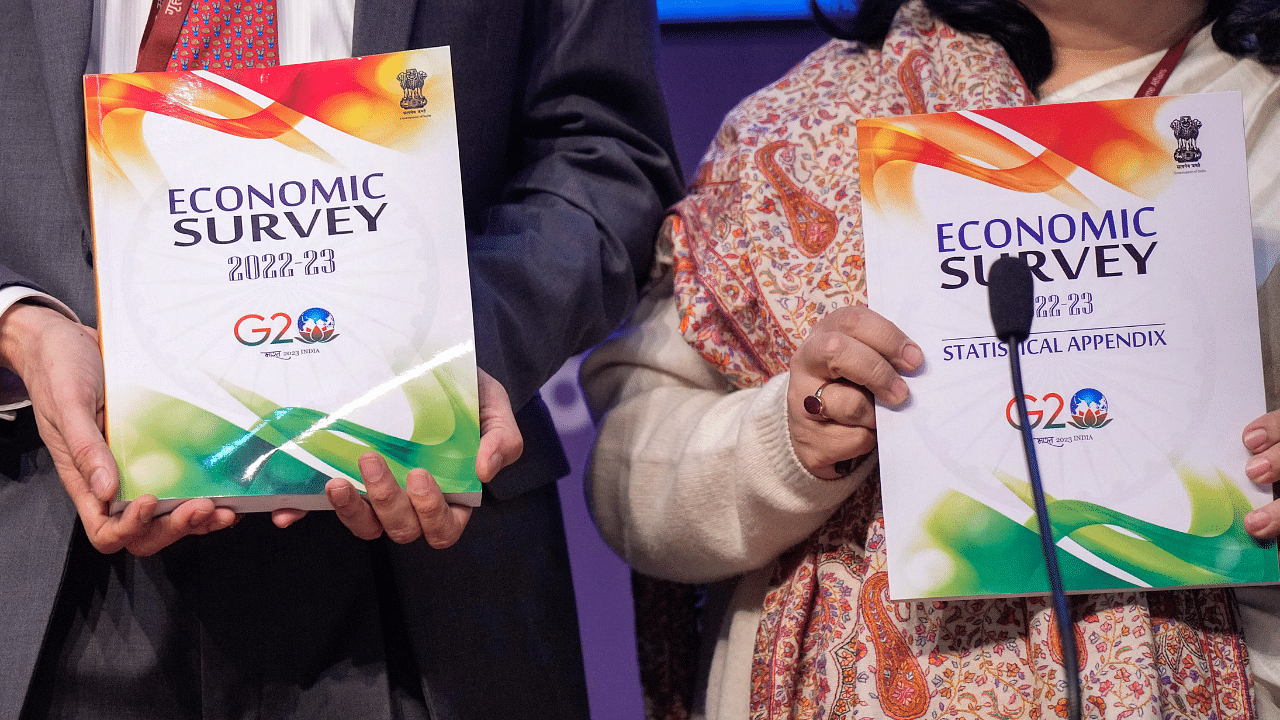
The annual survey of the state of the economy has projected a bullish outlook for growth in the coming year even as it expresses confidence over complete recovery from the ravages of the Covid-19 pandemic.
The Economic Survey for 2022-23 assumes more significance than usual as it precedes presentation of second Narendra Modi-led National Democratic Alliance (NDA) government’s last full budget before the general elections in 2024.
While it may not be a political document, it certainly sets the tone for a budget that is expected to continue the drive towards reviving the economy by stepping up capex and boosting infrastructure growth. The mood is upbeat as it declares that recovery from the pandemic is not only complete, but that growth will also continue to surge over the coming decade.
The survey expects growth in real terms to moderate from 7 percent in fiscal 2022-23 to 6-6.8 percent in FY 2024. But it expects an acceleration subsequently, and the International Monetary Fund (IMF) has buttressed this projection by its latest forecast of 6.1 percent growth in FY2025.
The survey does not hesitate to point out the downside risks for FY2024, mainly in the form of global headwinds. The external environment has been characterised by monetary tightening due to multi-decade highs in inflation numbers. This has led to slowing down of economic growth in advanced countries, which are facing the spill overs of disruption of supply chains and uncertainties caused by geopolitical conflicts, as is currently underway in Ukraine. This in turn is expected to dampen trade growth, and contribute to the current plateauing of India’s export growth.
The survey highlights the fact that this could further widen India’s current account deficit (CAD). It notes that CAD widened to 4.4 percent of GDP in the July-September 2022 quarter from 2.2 percent of GDP in the first (April-June) quarter. Yet it is confident that foreign exchange reserves are sufficient to deal with a widening CAD and intervene in the forex market to deal with rupee volatility. It cautions that robust domestic demand may push up imports adding to the effect of slowing exports. A widening of the CAD could also put pressure on the rupee. At the same time, the survey notes that the silver lining of global developments are lower oil prices.
It maintains that another risk to the outlook for India is the continued monetary tightening exercises. It comments that while the pace of rate hikes has slowed, entrenched inflation may prolong the tightening cycle. However, the survey is still confident that the external situation will be “manageable”.
In line with its confident tenor, the survey highlights the upsides to the growth outlook which includes the limited impact of the recent surge of Covid-19 cases in China that will ensure normalising of global supply chains. It argues that the inflationary impulses from China’s reopening will not be persistent.
Most significantly it underlines that the recessionary tendencies in advanced economies will prompt a return of capital flows to India, given its below six percent inflation rate. Finally, it feels this will give an impetus to animal spirits and a boost to private investment in the economy.
Touching upon the crucial issue of jobs, the survey rightly notes that growth is inclusive when it creates employment. It finds that both official and unofficial sources confirm that employment levels have risen during FY23. It quotes the Periodic Labour Force Survey to say that the unemployment rate has improved from 9.8 in the July-September 2021 quarter to 7.2 percent the same quarter in 2022.
As for the factors that have driven growth in the current fiscal, it points to growing private consumption, higher public capital expenditure, strengthening of corporate balance sheets, increasing credit growth to small business as well as the return of migrant workers to cities. The survey has made a special mention of the revival of consumption in the economy. It notes that the rebound in India was notable in scale compared to many other countries and contributed to a rise in domestic capacity utilisation.
On the capex drive in the last two budgets, the survey says this was a strategic initiative aimed at crowding-in private investment into the economic landscape. Giving a clear hint that this is likely to continue in the next budget, it points to the trend of rising private sector projects. It also highlights the robust credit growth to MSMEs which has been estimated at over 30 percent in the period from April to November 2022.
The Economic Survey does not always truly reflect the budget proposals to be presented on the following day. This time it projects a certain positive glow that is bound to be mirrored in a budget to be presented by a government gearing up for elections—nine assembly elections this year, and the general elections in 2024.
(Sushma Ramachandran is a senior journalist. The views expressed are the author's own. They do not necessarily reflect the views of DH.)